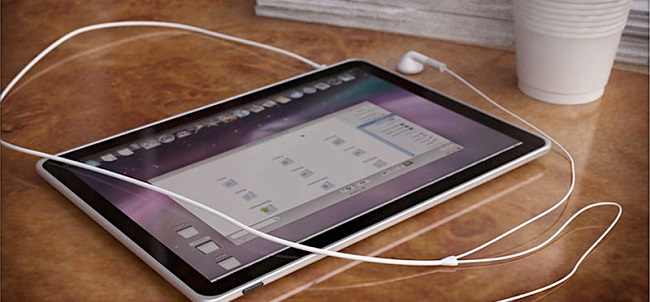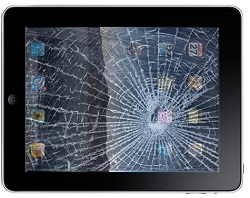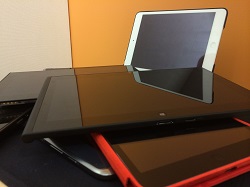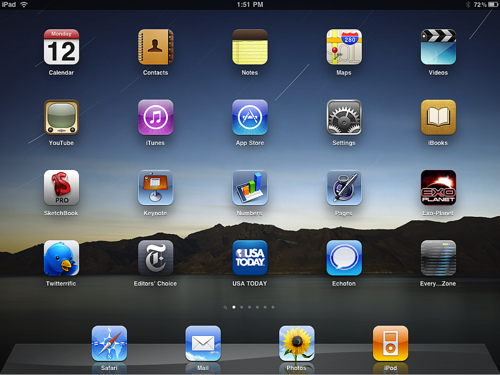Edtech is progressing at an incredible speed, and it can often be difficult to see what’s ahead. Dominic Norrish, group director of technology at United Learning takes a look at what we can expect for tablets and 1:1 learning.

Innovate My School asked me to write about ‘the classroom of 2017’ a while back, and I responded with a thousand words of wild speculation and unfounded assertion. It was a lot of fun to write, and when 2017 finally rolls around, what a laugh we shall all have (from astride our hover-fridges) at some of the stupider sentences. And apparently their appetite for the barely-credible knows no bounds – this time they want to know what the future holds for tablets in education…
If you’re a teacher working in the UK, there’s a good chance that you use a tablet as part of your work. While we originally set out to publish an article on the different tablet devices available to educators, the response to our questions was so Apple-oriented, we’ll begin with iPads for now.

This article is comprised of the opinions of ten different education professionals, either teachers or former teachers. Twitter profiles are linked to the first use of a contributor’s name.
Given the popularity of debates surrounding tablet learning and BYOD schemes, Group Director for Technology at United Learning Dominic Norrish has written a thorough piece addressing the pros and cons of 1:1 learning.

I want to consider, over the course of this post and the next, the reasons why schools are choosing tablets to fulfil their 1:1 ambitions and suggest a slight tweak on how this by-now-familiar formula might be improved. Fundamentally, the reason is easily articulated; schools want to bring the undoubted benefits of a really powerful and functional computer to every one of their students, to be accessed whenever it is the most effective tool to support learning. It’s rarely more complicated than that, at its heart. Tablets are simply the best answer we currently have for distributing access to personalised computing.
But beyond this broad and over-arching ambition, let’s take a look at why tablets specifically are chosen by school leaders for 1:1 projects above other form-factors:
After Bett last month, many in the education industry are considering the current state of technology in the classroom. There’s a wide range of gadgets that teachers can consider, and Matt Britland gives his thoughts on the options available.

Last year I wrote an article for the Guardian on the future of technology in education. This article focused on ‘The Cloud’ and its impact on education, whilst only briefly mentioning devices. As it’s now 2014, I thought it would be useful to revisit this subject and take a look at some things to look out for and how they can be used to support teaching and learning over the coming years.
Schools are taking tablets very seriously at the moment, and many are investing in new devices. Apple has a bit of a stranglehold in education with its iPad, but with an influx of cheaper tablets more and more schools may opt for Android devices like the Tesco Hudl. Microsoft are trying to get involved with its new Surface 2, so 2014 or 2015 may see Apple losing its grip. The iPad is my preferred device, but it is expensive and schools need to decide how tablets will be used to support teaching and learning before they splash out. From a personal point of view, Apple need to make some improvements in order to keep ahead. Not all schools want to go 1:1, and there needs to be far better ways to manage devices used across the school. Multiple profiles on devices would be fantastic, as would true multitasking with apps working side-by-side; some operating systems are already offering this. Apple and other providers need to start talking to schools if they want us to invest money in their devices. Tablets are not always suitable for certain needs, Google Chromebooks are making headway in schools as many are looking at adopting Google Apps, which is free for education use.

Looking around the stands at the BETT Show in January, it was clear to see that some of the bigger companies - like Apple and Google - are changing the way in which education, in and out of the classroom, is being delivered.
The gradual dissolution of Local Authority support and guidance brings new challenges for schools. With IT budgets constantly shrinking, schools have to figure out new ways to manage their IT network more effectively, for less money, and to keep up with the evolution of new technology in the classroom. There has been a huge increase in the sales of iPads, iPhones, Blackberrys, Androids and other hand-held devices. Many of these devices are being used in schools and educational establishments to support teaching and learning, and administration. These devices are multi-functional, up-to-date, user-friendly and portable. Working on the move is much easier and accessible than on a laptop. Wireless appliances can be utilised across a range of academic subjects and in some schools students are now able to bring their own devices. This means that they are no longer dependent on access to a school-based machine; therefore, improving access to key applications and revision at home. If the appropriate server is in place, wireless appliances enable staff and pupils to access the internet, e-mail and the school’s intranet regardless of location within the school's grounds.

A community-driven platform for showcasing the latest innovations and voices in schools
Pioneer House
North Road
Ellesmere Port
CH65 1AD
United Kingdom